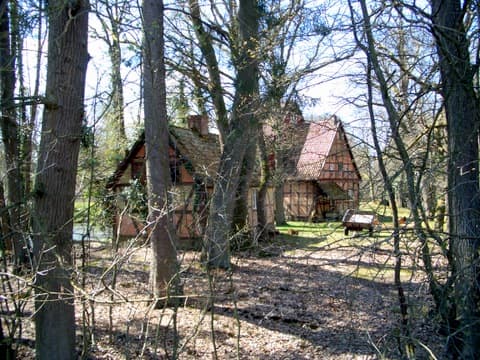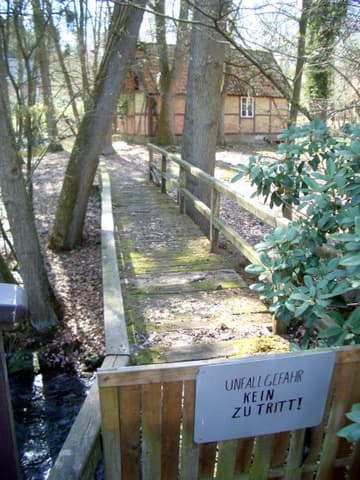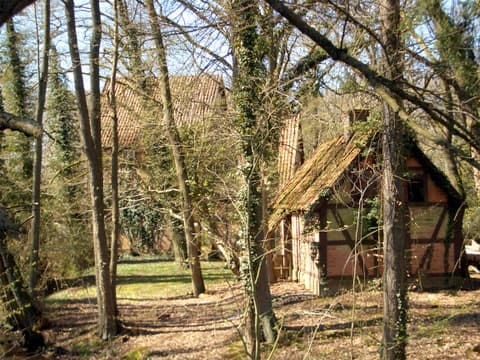


Geschichtliche Eckdaten
Die Wassermühle Soderstorf wurde erstmals 1427 bezeugt. Die Mühle ist seit 1650 bis heute im Besitz der Familie Vogt und wurde in ihrer langen Geschichte als Mahl-, Öl-, Grütz-, Loh- und Sägemühle genutzt. In den 1960ern wurde die Wassermühle Soderstorf nur noch für den Eigenbedarf des Mühlenhofes genutzt und steht seitdem still.
Die heutigen Gebäude auf der von der Luhe und dem „Mühlenumflut“ umflossenen Mühleninsel sind aus dem frühen 19. Jahrhundert. Das kleine Gebäude zur Straße hin ist das Backhaus und das größere Fachwerkhaus am Rand zum Wäldchen ist das Mühlengebäude.
Besichtigungen
Die Wassermühle Soderstorf kann nicht besichtigt werden und auch der Zugang zur Mühleninsel ist derzeit aus Sicherheitsgründen nicht möglich. Die Wassermühle kann lediglich von der Straße aus in Augenschein genommen werden.
Die Niedersächsische Mühlenstraße
Folgen Sie der Niedersächsischen Mühlenstraße und entdecken Sie dabei bis zu 256 Mühlen in 17 niedersächsischen Landkreisen.
Das Internationale Wind- und Wassermühlen-Museum Gifhorn
Wind- und Wassermühlen waren Jahrhunderte lang der „Motor“ der Wirtschaft. Das „Kulturgut“ Mühle prägte neben wirtschaftlichen Arbeitsabläufen, sozialen Ordnungen das Erscheinungsbild von Landschaften und Städten und dies bis zum heutigen Tag. Die spannende Geschichte und die faszinierende Technik der Wind- und Wassermühlen wird im Internationalen Wind- und Wassermühlen-Museum Gifhorn ausführlich und informativ dargestellt.
